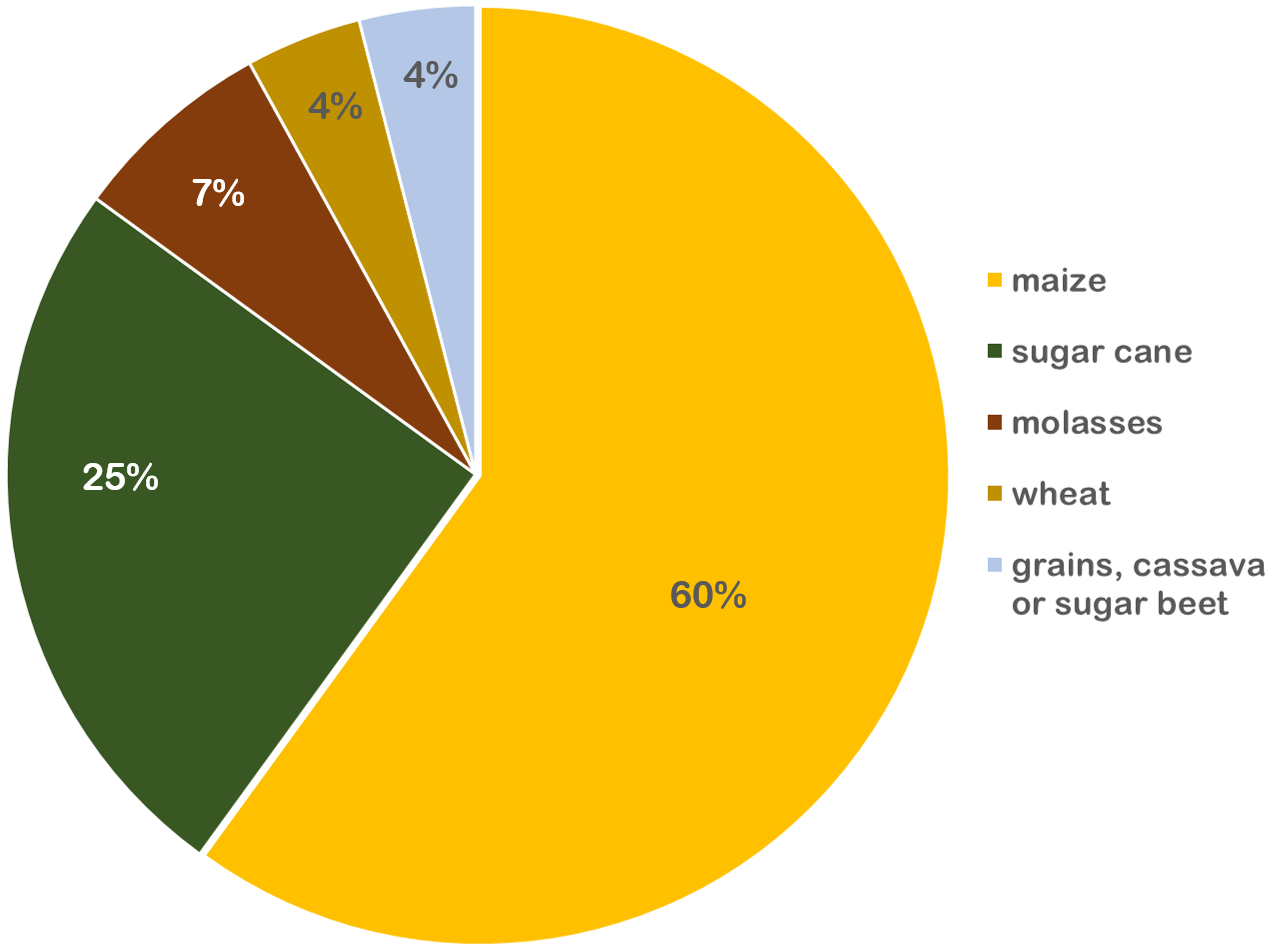Bioethanol (Sugar- or Starch-Based Biofuel)
Ethanol
- About 60% of the total ethanol volume is produced from maize (mainly in the USA).
- 25% of the total ethanol volume is produced from sugarcane (with the largest production capacities in Brazil).
- 7% is produced from molasses, 4% from wheat, and the remainder from other cereals, cassava, or sugar beets (OECD-FAO Agricultural Outlook 2019).
- Europe, the fourth-largest bioethanol producer, uses wheat for more than 20% of its production in addition to maize (OECD-FAO, 2019).
Bioethanol Feedstocks_EN byAnne Rödl, translated by HOOU (CC BY-SA 4.0)
Ethanol is used in industrial applications, food and beverages, cosmetics, and pharmaceutical products (e.g., disinfectants). However, in 2019, a full 82% of the total ethanol production in Europe was used as a renewable fuel (ePure, 2020).
Overall, more than 90% of global ethanol consumption is used as biofuel (Proskurina et al., 2019). However, the global demand for biofuels only partially affects the worldwide demand for agricultural products and, therefore, does not always have a direct impact on the food market. The ratio of use for food versus biofuel production varies significantly between crops. For example, about 23% of the global demand for sugar is attributed to bioethanol production (FAO/OECD, 2019). Only 9% of the world’s cereal crops (barley, maize, sorghum, oats, rye, and wheat) are used for biofuel production (UFOP, 2020).
Union zur Förderung von Oel- und Proteinpflanzen e.V. (2019). UFOP report on global market supply 2019/2020: European and world demand for biomass for the purpose of biofuel production in relation to supply in the food and feedstuff markets

